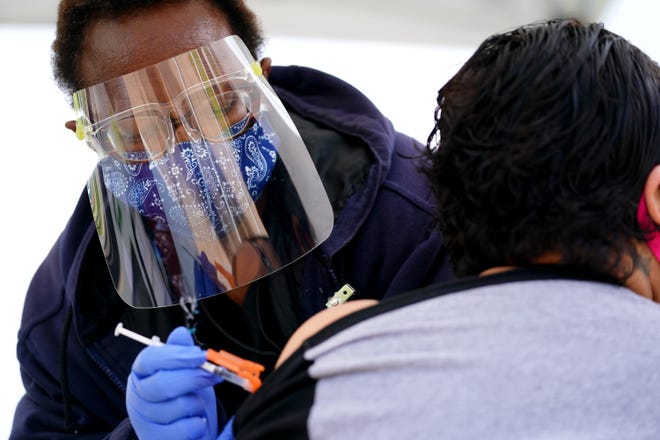
Well, it’s that time of year. Leaf peepers far and wide are planning their weekend getaways to get back to nature by hopping in their SUVs, rolling up the windows, and sitting in interminably long lines, waiting for a chance to drive by a few colorful trees on their way to purchase a $9, artificially flavored, pumpkin spice latte at the drive up window.
Ahhhh. Isn’t autumn wonderful?!
Ok, sorry. That was a little overly cynical. Let’s get back to that fall foliage color.
For those out there who are actually still reading, and wondering about this year’s fall color predictions, here's a primer on how the process of fall color works and how the current dry spell might impact the year's show.
Why do leaves change color in the fall?

First off, let’s manage expectations. Those of us who live in the middle part of North America, both from a north/south and east/west perspective, generally get to experience pretty good color this time of year. Sure, we’re generally not in the same league as the eye-popping Vermont sugar maple show or acres of golden aspens of the western Rocky Mountains. But most years, our local mix of tree species offers up a pretty good mix of color that, despite annual prognostications of "catastrophically poor color" or "off years" makes a nice show.
You may likeWhat does dry weather mean for Kentucky's fall foliage and wildfires?
As most readers of this column will know, fall foliage color is a combination of the unmasking of pigments that have been there all summer long plus the de-novo synthesis of new pigments in response to changing environmental signals. But for the one or two of you out there who have forgotten a few details, here are the basics.
Why do leaves turn yellow and orange?

Yellow and orange pigments fall into what we in plant chemistry geekdom classify as carotenoids and xanthophylls and they are miraculous little packets of do-it-all function. They support the green chlorophyll in serving as accessory light receptors, enhancing the overall efficiency of the harnessing of light energy. But they also work as botanical bouncers, guarding against the destructive impacts of too much light. They are generalized antioxidants, biosynthetic precursors of various hormones, vitamins and other biochemical cofactors. They give carrots and pumpkins their orange color.
Xanthophylls and carotenoids exist in green leaves all through the summer but are masked by the much higher concentrations of green chlorophyll. But this time of year, chlorophyll production rate decreases, and its consumption/degradation rate increases resulting in a gradual decrease in greenness of leaves. Xanthophylls and carotenoids are degraded much more slowly in leaves, so they hang around much longer to put on a nice fall show.
You may likeHere are 5 local places in Louisville to grab a pumpkin beer or fall cocktail
On the other hand, the red and purple fall tones of dogwoods, black gums and sumacs result from new pigments created this time of year in a pretty cool cascade of events.
Why do leaves turn red and purple?

As fall settles in, deciduous plants start to prepare for the annual shedding of their leaves. At the base of each petiole (the little "stem" that connects the leaf blade to the woody branch), there is the gradual formation of an abscission layer — sort of a corky band-aid — that will protect the branch when the leaf finally drops. And as that abscission layer starts to form, there is a gradual slowing and eventual shut down of the normal leaf process of exporting newly formed sugars out of the leaves and off to the rest of the plant. On all those bright and sunny fall days, all the sugar produced in photosynthesis gets trapped in the leaves.
Of course, Mother Nature loathes to see anything go to waste, so in an ingenious arrangement, it turns out that those little sugar molecules are immediate precursors to the biosynthesis of the red and purple pigments (anthocyanins, if you must) that put the umph in the very best fall color displays.
You may likeBourbon Spiced Lattes and an Autumn Spritz? 5 must-try fall cocktail recipes
So, the Cliff Notes version of all this fall color biochemistry is that yellows and oranges are there all summer and come to the forefront as the green pigments fade away. The reds and purples come from the build-up of sugars in the gradually isolated leaves. But what happens to this process when it hasn't rained for 40 days and 40 nights?
Once again, we go to the split systems of the yellows/oranges vs the reds/purples.
What happens to fall colors when there is a drought?

When it gets extremely dry, as it is this year in and around Louisville, the rate of chlorophyll loss accelerates. That means we see the yellows a little earlier than we would otherwise. And as long as it doesn’t get so dry that leaves prematurely dry up and turn brown, we get a pretty good show from this group of pigments.
The anthocyanins are a little more complicated.
In order to have good red/purple fall color, we need to have a strong photosynthetic process (sugar protection) going on in the leaves. If the drought is so severe that it prematurely slows or shuts down photosynthesis, we’ll see reduced red/purple show. The million question is, when is a dry spell sufficiently impactful that it will significantly decrease anthocyanin production?
Of course, the obvious answer to that question is ... well, I’ll get back to you on that one.
You may like7 things to plant to keep deer and squirrels away from your fall bulbs & spring flowers
For better or for worse, in the middle sections of North America, we have a much stronger representation of tree species that tend to favor the carotenoid/xanthophyll color show. That means that at its best, our show is not as spectacular as some other parts of the continent. But the other side of the coin is that our predominantly yellow shows are less susceptible to impacts from late-season droughts.
So, this fall, as you sit in the car, waiting in the pumpkin spice latte line, you can amaze your carpool friends with your advanced exposition on "it depends!"
Paul Cappiello is the executive director at Yew Dell Botanical Gardens, 6220 Old Lagrange Road, yewdellgardens.org.
Source link








